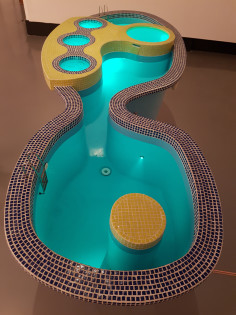los carpinteros
ロス·テロス
ЛОС-КАРПИНТЕРОС
huellas adidas

source: loscarpinterosnet
Los Carpinteros, colectivo artístico fundado en 1991 en La Habana.
Marco Antonio Castillo Valdés, nació el 18 de septiembre de 1971 en Camagüey, Cuba. Graduado en 1994 del Instituto Superior de Arte (ISA), La Habana, Cuba.
Dagoberto Rodríguez Sánchez, nació el 6 de marzo de 1969 en Caibarién, Las Villas, Cuba. Graduado en 1994 del Instituto Superior de Arte (ISA), La Habana, Cuba.
Alexandre Jesús Arrechea Zambrano, nació el 12 de septiembre de 1970 en Trinidad, Las Villas, Cuba. Graduado en 1994 del Instituto Superior de Arte (ISA), La Habana, Cuba. Formó parte del colectivo hasta el año 2003.
Viven y trabajan entre La Habana y Madrid.
.
.
.
.
.
.
source: loscarpinterosnet
Los Carpinteros, collective founded in 1991 in Havana.
Marco Antonio Castillo Valdés, was born on September 18, 1971 in Camaguey, Cuba. Graduated in 1994 from the Instituto Superior de Arte (ISA), Havana, Cuba.
Dagoberto Rodríguez Sánchez, was born on March 6, 1969 in Caibarién, Las Villas, Cuba. Graduated in 1994 from the Instituto Superior de Arte (ISA), Havana, Cuba.
Alexandre Arrechea Jesus Zambrano, was born on September 12, 1970 in Trinidad, Las Villas, Cuba. Graduated in 1994 from the Instituto Superior de Arte (ISA), Havana, Cuba. He was part of the group until 2003.
They live and work between Havana and Madrid.
.
.
.
.
.
.
.
source: ignantde
‘The Havana-based collective Los Carpinteros (The Carpenters) adopted their name in 1994, deciding to renounce the notion of individual authorship and refer back to an older guild tradition of artisans and skilled laborers. Interested in the intersection between art and society, the group merges architecture, design, and sculpture in unexpected and often humorous ways. They create installations and drawings which negotiate the space between the functional and the nonfunctional. The group’s elegant and mordantly humorous sculptures, drawings, and installations draw their inspiration from the physical world—particularly that of furniture. Their carefully crafted works use humor to exploit a visual syntax that sets up contradictions among object and function
as well as practicality and uselessness.
.
.
.
.
.
.
.
source: aima007blogspot
Le collectif de la Havane Los Carpinteros a adopté son nom en 1994, en décidant de renoncer à la notion d’auteur individuel et se référer à une tradition plus ancienne guilde des artisans et des ouvriers qualifiés. Le groupe fusionne l’architecture, le design et la sculpture de façon inattendue et souvent humoristique.
.
.
.
.
.
.
.
source: zezyaalivejournal
Арт-коллектив Лос-Карпинтерос основан в 1991 на Кубе, в городе Гаванна. Их крупные и не очень инсталляции позволяют увидеть обычные вещи в новом ракурсе.
Обычные вещи в необычном ракурсе Художники сгибают, скручивают, деформируют и видоизменяют предметы обихода, создавая творения с совершенно иным контекстом.
Обычные вещи в необычном ракурсе Коллектив Лос-Карпинтерос играет на нетрадиционным восприятии привычных предметов.
Обычные вещи в необычном ракурсе Привычные формы приобретают хаотические, необычные очертания, и позволяют взглянуть на окружающий мир другим взглядом.
.
.
.
.
.
.
.
source: nicola-rotherde
Spielerisch-experimentelle Annäherung an ein Kunstwerk in der Ausstellung “Los Carpinteros”: Ping Pong
„Ping Pong” – eine (ungewöhnlicherweise?) blaue Tischtennisplatte, auf die ein Gewirr von dünnen weißen Plastikrohren montiert wurde. Für den geübteren Kunstbetrachter ist dies als Ballbewegungsdarstellung offensichtlich – für Kinder dagegen ist der Gedanke, die flüchtige Bewegung, einen zurückgelegten Weg auf diese Weise mit Material darzustellen, nicht so naheliegend. Mit den folgenden Vorübungen wollte ich ihnen den Zugang erleichtern.

